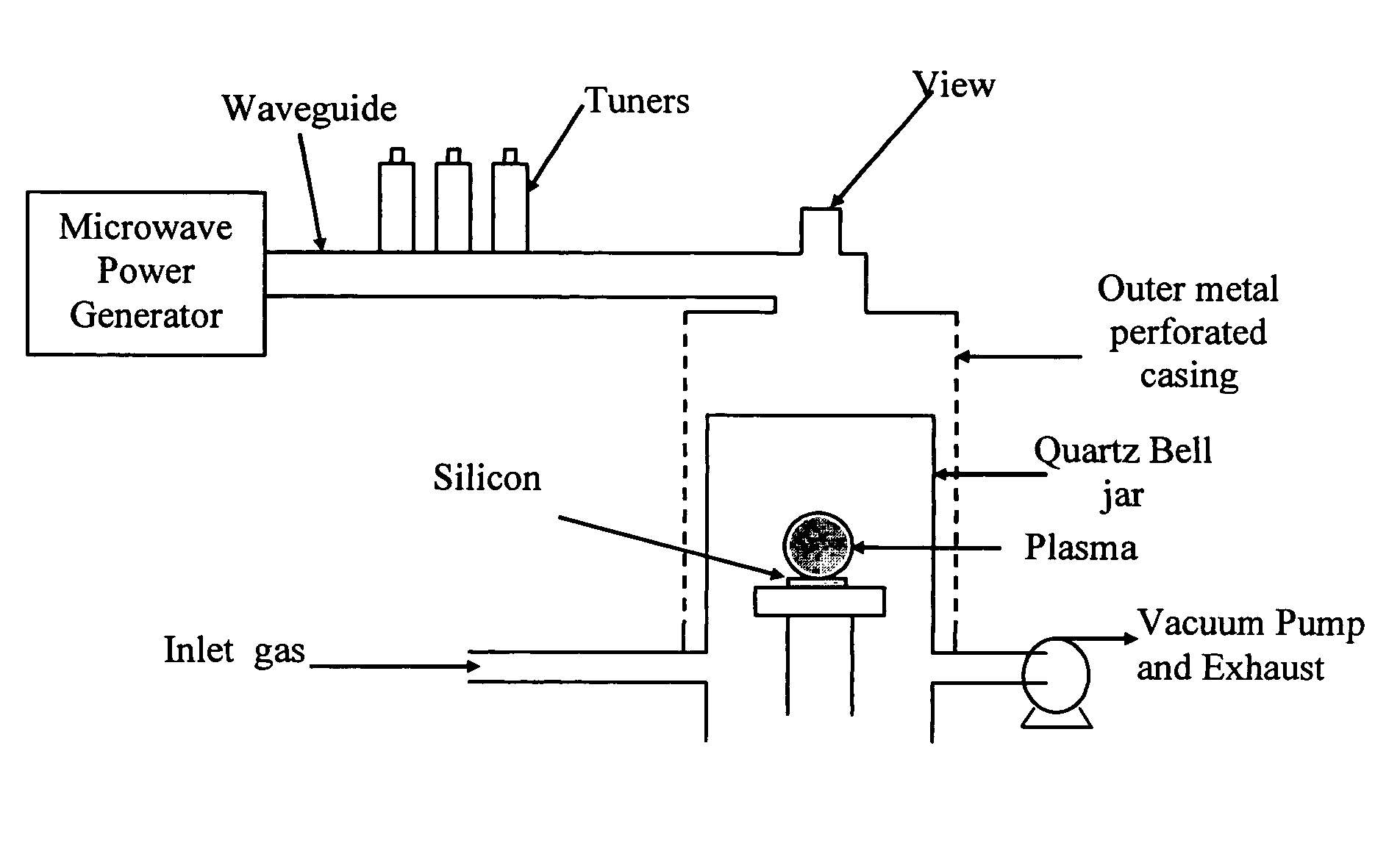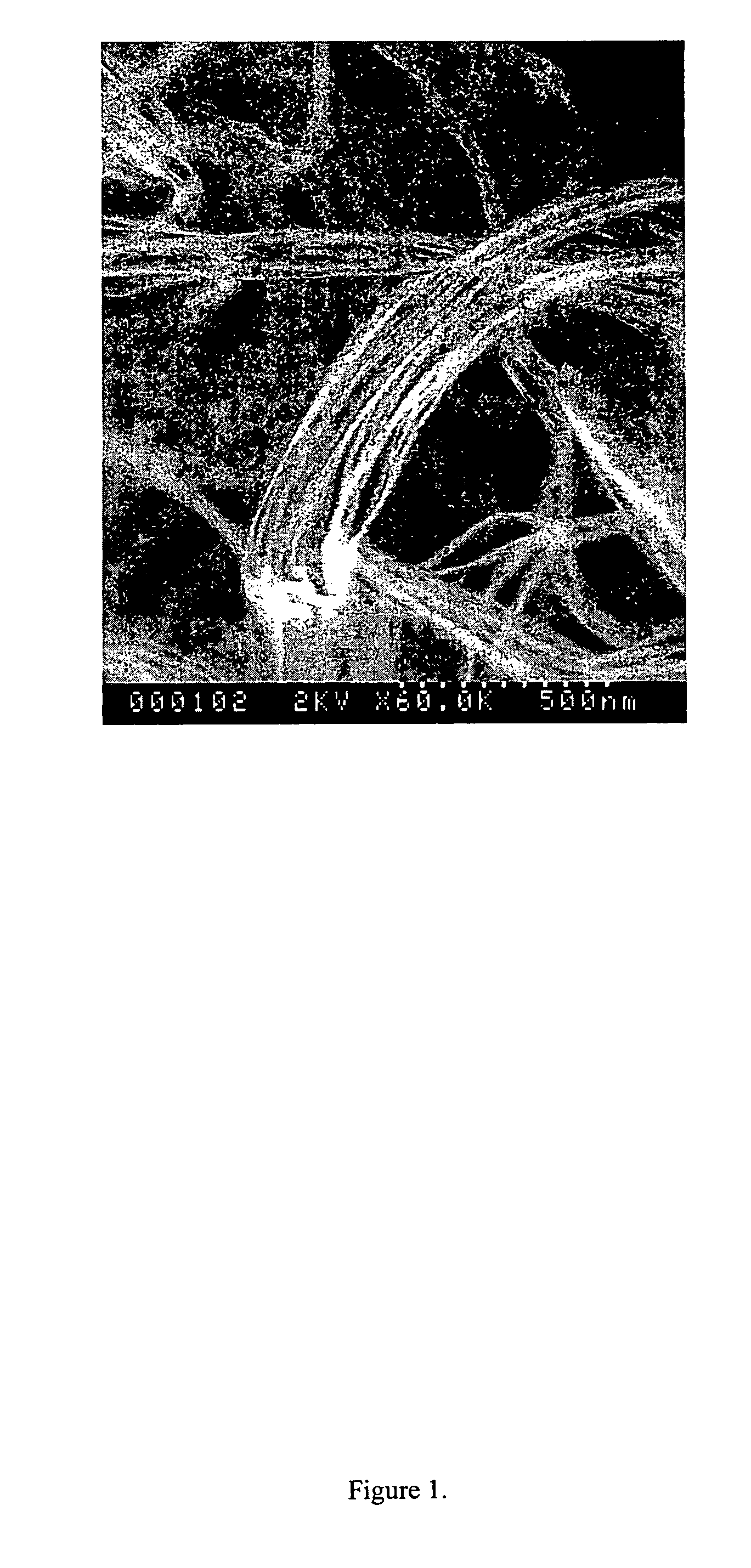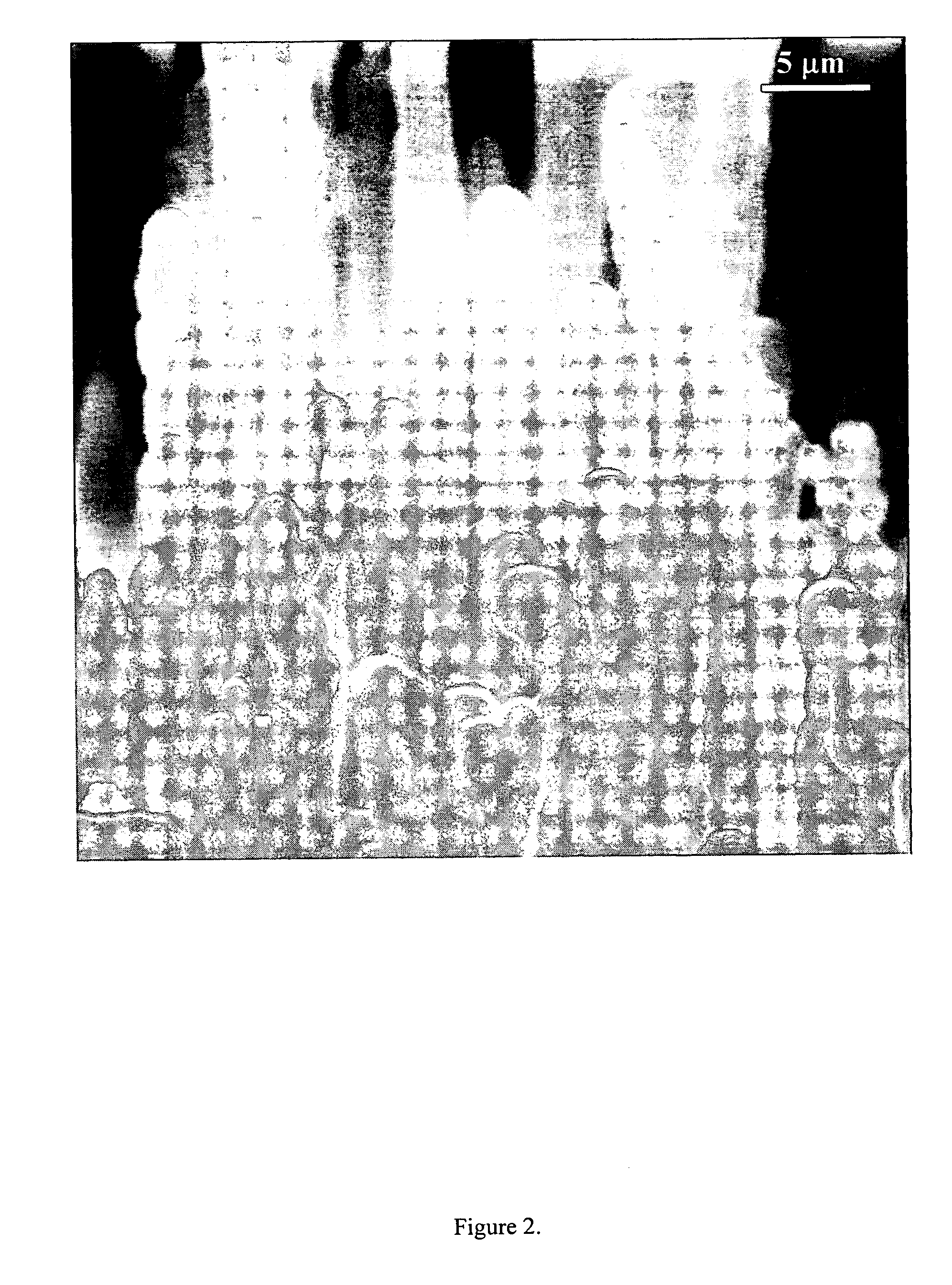Synthesis of fibers of inorganic materials using low-melting metals
a technology of inorganic materials and fibers, applied in the direction of polycrystalline material growth, crystal growth process, condensed vapor, etc., can solve the problems of low deposition rate and loss of fiber formation ability
- Summary
- Abstract
- Description
- Claims
- Application Information
AI Technical Summary
Benefits of technology
Problems solved by technology
Method used
Image
Examples
example 1
Bulk Synthesis of Silicon Fibers
[0073]FIG. 6 shows a schematic of a type of reactor. A silicon substrate (2 cm×2 cm) was prepared by cleaning with a 45% HF solution, thoroughly rinsing in acetone and ultra-sonication. Droplets of gallium metal at 70° C. were applied to form a film with a thickness of approximately 100 microns. The nitrogen flow rate was set to 100 sccm. The pressure in the reactor was set to 30 Torr. Microwaves at 2.45 Ghz were used to ionize the nitrogen gas which served as the carrier gas. The input microwave power was 1000 W. The experiments were done in an ASTeX model 5010 bell jar reactor chamber equipped with an ASTeX model 2115 1500 W microwave power generator. 0.5 sccm of hydrogen were introduced into the nitrogen plasma. The reaction was carried out for six hours. Graphite blocks were used as substrate stage. The quartz bell jar volume was approximately 2000 cc.
[0074]After the growth experiments, the silicon substrate covered with an ashy mass was observed ...
example 2
Bulk Synthesis of Gallium Oxide Fibers
[0092]Gallium oxide fibers can be grown using the above plasma mediated technique. A quartz substrate (2 cm×2 cm) was prepared by ultra-sonication in isopropyl alcohol. Droplets of gallium metal at 70° C. were applied to form a film with a thickness of approximately 100 microns. The hydrogen flow rate was set to 100 sccm. The pressure in the reactor was set to 40 Torr. Microwaves at 2.45 Ghz were used to ionize the hydrogen gas. The input microwave power was 700 W. The experiments were done in an ASTeX model 5010 bell jar reactor chamber equipped with an ASTeX model 2115 1500 W microwave power generator. 0.6 sccm of oxygen were introduced into the hydrogen plasma. The reaction was carried out for four hours. Graphite blocks were used as substrate stage. After the growth experiments, the quartz substrate covered with a whitish mass was observed using a scanning electron microscope (SEM). FIGS. 20 through 25 show micrographs of gallium oxide fiber...
example 3
Synthesis of Carbon Nanofibers
[0096]Carbon nanofibers were grown using the above plasma-mediated technique. A pyrolytic boron nitride substrate (˜1 cm×1 cm) was prepared by ultra-sonication in isopropyl alcohol. The substrate was covered with molten gallium droplets. The hydrogen flow rate was set to 100 sccm. The pressure in the reactor was set to 40 Torr. Microwaves at 2.45 Ghz were used to ionize the hydrogen gas. The input microwave power was 700 W. The experiments were done in an ASTeX model 5010 bell jar reactor chamber equipped with an ASTeX model 2115 1500 W microwave power generator in as shown in FIG. 6. Two (2.0) sccm of methane were introduced into the hydrogen plasma. The reaction was carried out for four hours. Graphite blocks were used as substrate stage. After the growth experiments, the quartz substrate covered with a grey mass was observed using a scanning electron microscope (SEM). FIGS. 30 through 33 show micrographs of carbon nanofibers of various thickness and ...
PUM
| Property | Measurement | Unit |
|---|---|---|
| temperature | aaaaa | aaaaa |
| pressure | aaaaa | aaaaa |
| thickness | aaaaa | aaaaa |
Abstract
Description
Claims
Application Information
 Login to View More
Login to View More - R&D
- Intellectual Property
- Life Sciences
- Materials
- Tech Scout
- Unparalleled Data Quality
- Higher Quality Content
- 60% Fewer Hallucinations
Browse by: Latest US Patents, China's latest patents, Technical Efficacy Thesaurus, Application Domain, Technology Topic, Popular Technical Reports.
© 2025 PatSnap. All rights reserved.Legal|Privacy policy|Modern Slavery Act Transparency Statement|Sitemap|About US| Contact US: help@patsnap.com



